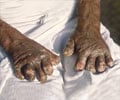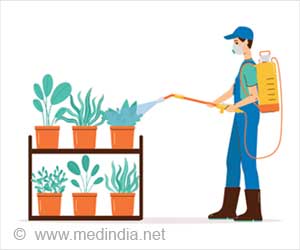
‘Pictorial flipchart on leprosy for Accredited Social Health Activists (ASHAs) has been jointly launched by the WHO Goodwill Ambassador for Leprosy Elimination, Sasakawa Leprosy Initiative, National Leprosy Eradication Programme (NLEP) of the Ministry of Health and Family Welfare of India (MoHFW), and WHO India in the run-up to Anti Leprosy Day on January 30, 2021. This activity is implemented to promote self-assessment and also urge individuals to counsel an ASHA or visit a government health facility if leprosy signs and symptoms are found.’
Tweet it Now
Leprosy exists since ancient times. At later stages of the disease, the formation of large ulcerations, loss of digits, skin nodules, and facial disfigurement may occur. “Government of India is committed to making India leprosy free. National Leprosy Eradication Programme is focusing on early and active detection of leprosy cases in order to ensure complete treatment, prevention of physical disabilities and to stop the community transmission. ASHAs are the main front-line workers in case detection activities, and incentives have been provided for ASHAs to even carry out the regular screening rounds in the endemic areas. ASHA flipbooks are an important IEC tool not only for ASHAs but also for the community”, says Rekha Shukla, Joint Secretary, Health & Family Welfare.
Measure to Eradicate Leprosy
According to the delivery, universally 202,189 new instances of infection were identified in 2019 of which South-east Asia represented 143,787 new cases. This is 71% of worldwide new cases. In India, 114,451 new cases were recognized in the FY 2019-2020. This addresses 80% of completely new cases found in South-East Asia and 57% of worldwide new cases.
Through activities done by ASHAs, it is aimed to improve the public awareness about leprosy as lack of the same is the serious issue that India is facing in its endeavors against the disease. Pictorial learning materials will help ASHAs to build up the right comprehension of the illness and insist local area individuals to help their exercises.
Advertisement
The flipchart printed in Hindi, Gujarati, Oriya, and Bengali dialects are being conveyed to 300,000 ASHAs in 6 leprosy endemic states: Bihar, Chhattisgarh, Gujarat, Jharkhand, Odisha, & West Bengal.
Advertisement
Source-Medindia












